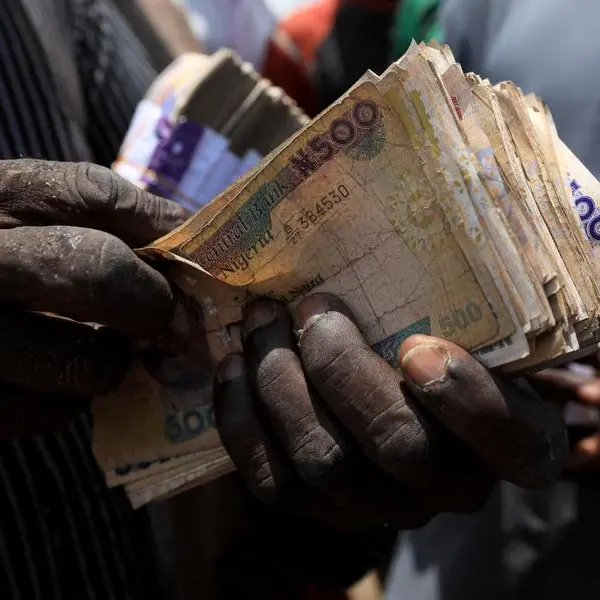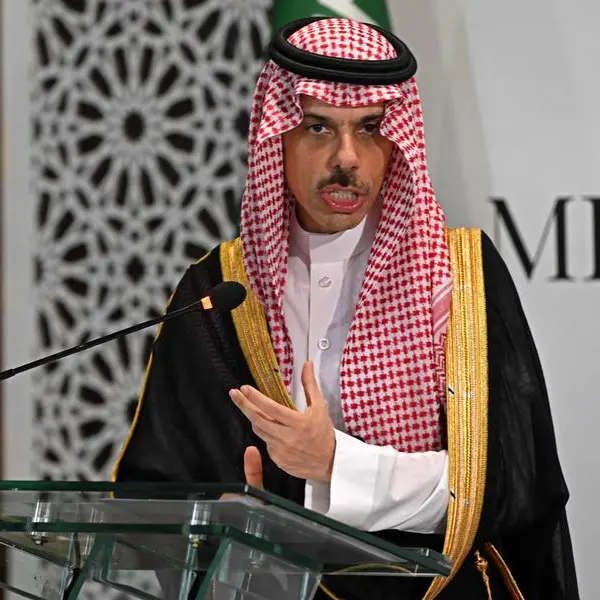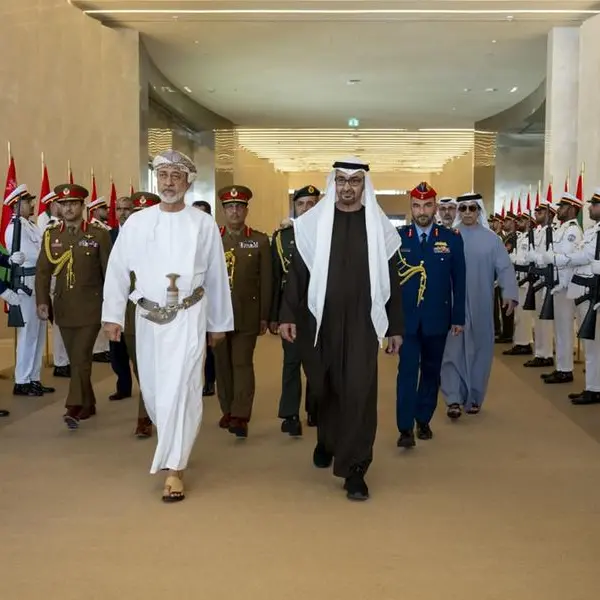27 August 2015
JEDDAH -- Regional equity markets were already reeling on account of weaker oil prices. Brent and US crude oil futures dropped significantly in the middle of the previous week and then tested fresh 6-1/2-year lows.
Lower oil prices translate into lower revenues for GCC economies which are still strictly dependent on oil receipts. Given heavy current expenditure that GCC governments have become embroiled in, following heavy budget surpluses in recent history, this would either mean curtailing the much needed capital expenditure or sustaining massive budget deficits; the latter being an option bearable only in the short term, and only if they draw down on their reserves and/or borrow from the market, Global Research Update on stock market tumult said Wednesday.
Furthermore, drop in the GCC was exacerbated after Fitch decided to cut the outlook for KSA's foreign and local currency issuer default ratings to "negative" from "stable", the report said.
One-year USD/SAR forwards jumped to their highest levels since 2003 in the last few days as banks hedged against the risk of the peg breaking; a development perceived by the market as being quite disquieting.
During the major sell-off, earlier in the week GCC markets that were in the green till 2 weeks ago, reversed their gains and those in losses fell further deep.
The KSA market for instance ended up lower by 30%YoY and 10%YTD, while its Kuwaiti counterpart lower by 21%YoY and almost 11%YTD.
Valuations no doubt became cheaper; take for instance the KSA market, which had traded at a P/E band of 13.1x - 22.0x over the last 4 years, as per Bloomberg, stood at 15.8x.
This signifies a discount of 5% to the 4 year average of 16.6x. A look at the MSCI GCC Index relates a similar tale, trading at 12.6x after having traded in between 13.1x and 19.2x over the same period.
Markets rebounded Tuesday, pairing some of the recent losses, but what needs to be seen is whether this is going to be sustainable.
Amidst a weak economic background both locally and internationally, bogged down by anemic oil prices and yet cheap valuations on the other end, the million dollar question that one may dare to ask is whether we have seen the worst.
Is the market now fairly valued or at least near it, after a de-rating that was bound to happen? Or have valuations become cheap and therefore opening up a window for further investment. Bottoms are only visible in hindsight when the vision is 20/20.
An optimist will likely point out at the fact that the S&P has made leaps and bounds over the past 6 years, making well over 100% returns (uptil May 2015) over the period without any major correction impeding its trajectory.
A correction was not only long overdue but something heathy. The US economy is on an uptrend and possibly one of the few economies in the world that saw its figures revised up by the IMF.
In today's world however, optimists are not held in much favor. Taking a cue from the flip side, that is, the fact that the Chinese market continued to fall despite recovery in regional and international markets, it is perhaps prudent to adopt a wait and see approach, until some concrete steps are announced by Chinese policy makers.
Or at least some stability is seen in the international markets from which our markets, at times take direction. Meanwhile, gold seems to be an attractive choice for wary investors, reflected in a 5% rise in gold prices in the last 20 days though technical analysts argue that gold is still technically weak and perhaps not the best choice.
The only certain thing in these trying times is that markets will be choppy and in this scenario, betting on volatility is perhaps the best option; maybe more so in a market where options are quite scarce.
China's economic growth in the second quarter came in at 7% year over year, the slowest pace in six years, due to a weak property market, soft domestic demand and last but not the least because of dwindling exports; its manufacturing PMI fell to 47.1 in August, marking a six year low.
In July 2015, China surprised global financial markets by announcing it would remove a hard peg that for over a decade had valued the US dollar at 8.28 yuan and ultimately in the 2nd week of August China's central bank devalued the yuan against the US dollar.
Earlier in the year, Chinese authorities became concerned that the stock market's rise had become unsustainable as Shanghai Composite Index rose 150% between June 2014 to June 2015.
Hence, they began to tighten the limits as they witnessed significant debt-financed stock market buying which was further strengthened by the fact that more than 40mn new stock accounts were opened between June 2014- May 2015, most of them being retail.
However, the stock market continued to rise and peaked in June and then began to fall quickly. By early July, the market was in free fall, and the Chinese government began to panic.
Authorities took a number of steps to push stock prices back up. Short selling was capped, pension funds were pushed to buy, government suspended initial public offerings, brokers created a fund to buy shares, companies' major shareholders (with more than 5% holding) were stopped from selling shares for six months, regulator ordered companies to either buy their own shares or encourage their executives or employees to do the same and last but not least they announced that a major state pension fund will be allowed to invest in stocks for the first time.
However all these measures failed to prop up the market which was already in jitters because of looming fears of expectation of increase in US interest rates and continuation of drop in oil prices.
Moreover, the credibility (or rather the lack of it) of numbers reported from China took center-stage, with investors growing ever more suspicious.
Soon regional and international stock markets across the world exhibited weakness in tandem with the drop in Chinese equity markets.
China then stunned the markets by devaluing the yuan - a potential distress signal that raised further questions about its policymakers' ability to keep a grip on the economy.
This was finally followed by a 25bps cut in the central bank's key lending rate, in an effort to calm stock markets after 2 decimating sessions, announced Tuesday and effective from Wednesday. Noteworthy, this is the 5th interest rate cut since November 2014.
JEDDAH -- Regional equity markets were already reeling on account of weaker oil prices. Brent and US crude oil futures dropped significantly in the middle of the previous week and then tested fresh 6-1/2-year lows.
Lower oil prices translate into lower revenues for GCC economies which are still strictly dependent on oil receipts. Given heavy current expenditure that GCC governments have become embroiled in, following heavy budget surpluses in recent history, this would either mean curtailing the much needed capital expenditure or sustaining massive budget deficits; the latter being an option bearable only in the short term, and only if they draw down on their reserves and/or borrow from the market, Global Research Update on stock market tumult said Wednesday.
Furthermore, drop in the GCC was exacerbated after Fitch decided to cut the outlook for KSA's foreign and local currency issuer default ratings to "negative" from "stable", the report said.
One-year USD/SAR forwards jumped to their highest levels since 2003 in the last few days as banks hedged against the risk of the peg breaking; a development perceived by the market as being quite disquieting.
During the major sell-off, earlier in the week GCC markets that were in the green till 2 weeks ago, reversed their gains and those in losses fell further deep.
The KSA market for instance ended up lower by 30%YoY and 10%YTD, while its Kuwaiti counterpart lower by 21%YoY and almost 11%YTD.
Valuations no doubt became cheaper; take for instance the KSA market, which had traded at a P/E band of 13.1x - 22.0x over the last 4 years, as per Bloomberg, stood at 15.8x.
This signifies a discount of 5% to the 4 year average of 16.6x. A look at the MSCI GCC Index relates a similar tale, trading at 12.6x after having traded in between 13.1x and 19.2x over the same period.
Markets rebounded Tuesday, pairing some of the recent losses, but what needs to be seen is whether this is going to be sustainable.
Amidst a weak economic background both locally and internationally, bogged down by anemic oil prices and yet cheap valuations on the other end, the million dollar question that one may dare to ask is whether we have seen the worst.
Is the market now fairly valued or at least near it, after a de-rating that was bound to happen? Or have valuations become cheap and therefore opening up a window for further investment. Bottoms are only visible in hindsight when the vision is 20/20.
An optimist will likely point out at the fact that the S&P has made leaps and bounds over the past 6 years, making well over 100% returns (uptil May 2015) over the period without any major correction impeding its trajectory.
A correction was not only long overdue but something heathy. The US economy is on an uptrend and possibly one of the few economies in the world that saw its figures revised up by the IMF.
In today's world however, optimists are not held in much favor. Taking a cue from the flip side, that is, the fact that the Chinese market continued to fall despite recovery in regional and international markets, it is perhaps prudent to adopt a wait and see approach, until some concrete steps are announced by Chinese policy makers.
Or at least some stability is seen in the international markets from which our markets, at times take direction. Meanwhile, gold seems to be an attractive choice for wary investors, reflected in a 5% rise in gold prices in the last 20 days though technical analysts argue that gold is still technically weak and perhaps not the best choice.
The only certain thing in these trying times is that markets will be choppy and in this scenario, betting on volatility is perhaps the best option; maybe more so in a market where options are quite scarce.
China's economic growth in the second quarter came in at 7% year over year, the slowest pace in six years, due to a weak property market, soft domestic demand and last but not the least because of dwindling exports; its manufacturing PMI fell to 47.1 in August, marking a six year low.
In July 2015, China surprised global financial markets by announcing it would remove a hard peg that for over a decade had valued the US dollar at 8.28 yuan and ultimately in the 2nd week of August China's central bank devalued the yuan against the US dollar.
Earlier in the year, Chinese authorities became concerned that the stock market's rise had become unsustainable as Shanghai Composite Index rose 150% between June 2014 to June 2015.
Hence, they began to tighten the limits as they witnessed significant debt-financed stock market buying which was further strengthened by the fact that more than 40mn new stock accounts were opened between June 2014- May 2015, most of them being retail.
However, the stock market continued to rise and peaked in June and then began to fall quickly. By early July, the market was in free fall, and the Chinese government began to panic.
Authorities took a number of steps to push stock prices back up. Short selling was capped, pension funds were pushed to buy, government suspended initial public offerings, brokers created a fund to buy shares, companies' major shareholders (with more than 5% holding) were stopped from selling shares for six months, regulator ordered companies to either buy their own shares or encourage their executives or employees to do the same and last but not least they announced that a major state pension fund will be allowed to invest in stocks for the first time.
However all these measures failed to prop up the market which was already in jitters because of looming fears of expectation of increase in US interest rates and continuation of drop in oil prices.
Moreover, the credibility (or rather the lack of it) of numbers reported from China took center-stage, with investors growing ever more suspicious.
Soon regional and international stock markets across the world exhibited weakness in tandem with the drop in Chinese equity markets.
China then stunned the markets by devaluing the yuan - a potential distress signal that raised further questions about its policymakers' ability to keep a grip on the economy.
This was finally followed by a 25bps cut in the central bank's key lending rate, in an effort to calm stock markets after 2 decimating sessions, announced Tuesday and effective from Wednesday. Noteworthy, this is the 5th interest rate cut since November 2014.
© The Saudi Gazette 2015











